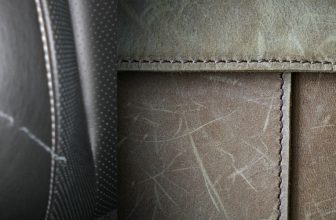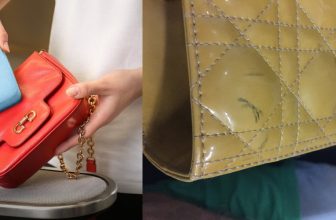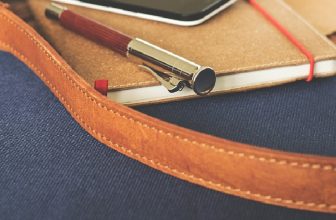How to Age Leather
In the world of craftsmanship and artistry, the process of aging leather has emerged as a captivating endeavor that marries tradition with innovation. Transforming pristine, new leather into a weathered, vintage masterpiece requires a delicate balance of skill, patience, and creativity.
Whether you’re a seasoned leatherworker or a curious novice, learning how to age leather opens a gateway to a world of personalized aesthetics and a unique connection to the past. The allure of aged leather lies in its ability to tell a story, reflecting the passage of time and the experiences it has witnessed.

From rustic, worn-out wallets that seem to whisper tales of distant travels, to distressed jackets that exude a sense of adventure, each piece carries the legacy of its own journey. This introductory guide delves into the art of aging leather, exploring various techniques, tools, and tricks of the trade that allow enthusiasts to imbue their creations with a timeless appeal and a touch of nostalgia.
What Is Leather Aging?
Leather aging is a process of artificially making leather look naturally aged. This is not to be confused with “distressing” or antiquing, which involves adding intentional damage to the leather for an aged look. Rather, the goal of leather aging is to make the material look older than it actually is without causing any additional damage.
The process of aging leather can be done in several ways, including physical treatment and chemical treatments. Physical treatments involve massaging the leather to soften it and make it appear aged. Chemical treatments include applying oils, waxes, and dyes to the material to alter its color or texture.
In some cases, leather aging may require a combination of both physical and chemical treatments. For example, a leather product may be massaged to soften it and then oiled to make it look more aged.
Leather aging can be an effective way of improving the look of new leather products, making them appear more worn in over time without damaging the material itself. Additionally, if done correctly, it can add years to the life of the leather product.
Importance of Aging Leather for Aesthetics and Durability
Aging leather correctly is an important part of the overall look and feel of a product. Not only does it give the piece a classic, vintage look; it also helps protect the leather from wear and tear over time. Aging leather can be done through various methods such as using leather conditioners, waxes, or oils to help speed up the breakdown process that normally occurs with age.
Additionally, you can also expose the leather to sunlight or use other techniques that help break down the fibers in the material and give it a weathered appearance.
When aging leather, it’s important to understand that not all leather ages gracefully. To ensure longevity of your piece, be sure to use quality products specifically designed for use on leather and avoid products that contain harsh chemicals. Additionally, if you’re looking for a quicker way to achieve a weathered look, use warm air or water-based treatments such as spray bottles filled with water and a brush to help soften the fibers of the leather.

Ultimately, aging leather correctly involves trial and error in order to determine the best method that works for each individual piece. Additionally, it’s important to be aware of your leather pieces care instructions and follow them as closely as possible to ensure a long-lasting, aesthetically pleasing product. Taking the extra time to properly age your leather will ultimately add value to your investment by helping preserve its unique look and feel over time.
10 Steps How to Age Leather
Step 1: Gather Your Materials
To begin the journey of aging leather, ensure you have all the necessary materials at hand. You’ll need the leather item you wish to age, leather cleaner and conditioner, sandpaper, rubbing alcohol, water, a sponge, a soft cloth, various dyes or stains, leather distressing tools, and a finisher. Gathering these supplies will set the stage for a successful aging process.
Step 2: Clean the Leather
Start by cleaning the leather thoroughly. Remove any dirt, dust, or oils that may hinder the aging process. Use a leather cleaner to gently wipe down the surface, and follow up with a leather conditioner to nourish the leather and prepare it for the next steps.
Step 3: Sand the Edges
To create a worn and softened appearance, sand the edges of the leather. Use sandpaper of varying grits to gently smooth and soften the edges. This step not only enhances the aged look but also makes the leather more comfortable to handle.
Step 4: Apply Rubbing Alcohol
For a more distressed and weathered look, dampen a sponge with rubbing alcohol and lightly dab it onto the leather surface. This will remove some of the dye and create irregular, faded spots, mimicking the effects of wear over time.
Step 5: Create Water Stains
Water stains can add a sense of authenticity to aged leather. Gently wet the leather using a damp cloth or sponge, focusing on areas that would naturally experience moisture exposure. Allow the leather to dry naturally, observing how water stains emerge and contribute to the aged appearance.
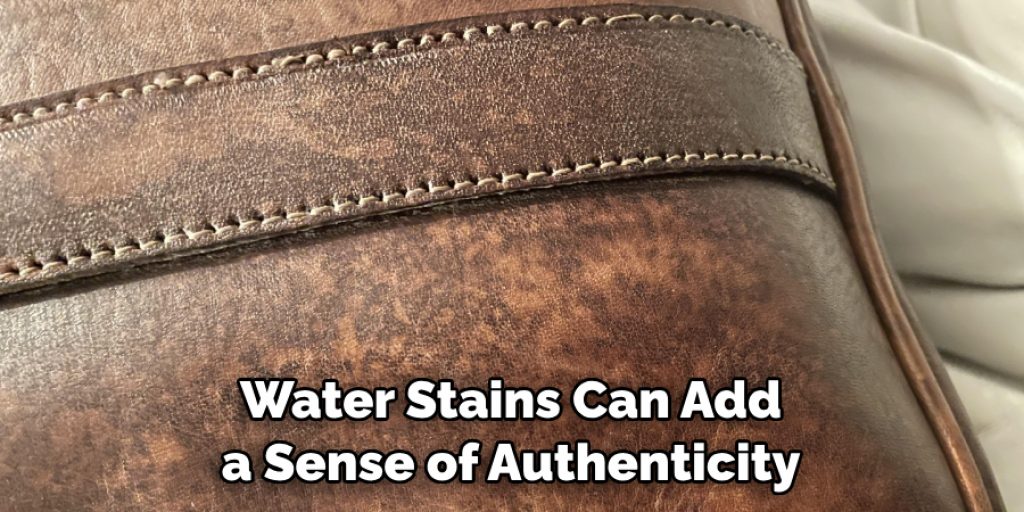
Step 6: Introduce Dyes and Stains
Dyes and stains play a pivotal role in achieving the desired aged effect. Experiment with different shades of dye to imitate the patina that forms over time. Apply the dye in thin layers, allowing each layer to dry before adding the next. Gradually build up the color until you achieve the desired level of aging.
Step 7: Distress the Leather
Distressing the leather involves creating deliberate imperfections that mimic the wear and tear of age. Utilize tools such as sandpaper, wire brushes, and even small rocks to scuff the surface, focusing on areas that would naturally experience friction. Be strategic in your distressing, considering the item’s functionality and history.
Step 8: Add Depth with Additional Layers
Layering different colors of dye and stain can add depth and dimension to the leather’s appearance. Apply a darker shade to creases, folds, and recessed areas, and then gently rub it off with a soft cloth to create a worn-in effect. This technique enhances the illusion of age and history.
Step 9: Apply a Finisher
Once you’re satisfied with the aging effect, apply a leather finisher to seal and protect the leather. This step not only enhances the longevity of the aged look but also adds a subtle sheen that replicates the natural patina of well-aged leather.
Step 10: Embrace Natural Aging
After completing the aging process, continue to use and enjoy your leather item. Natural wear and exposure to the elements will further enhance its aged appearance. Embrace the evolving character of the leather as it gains more stories to tell over time.
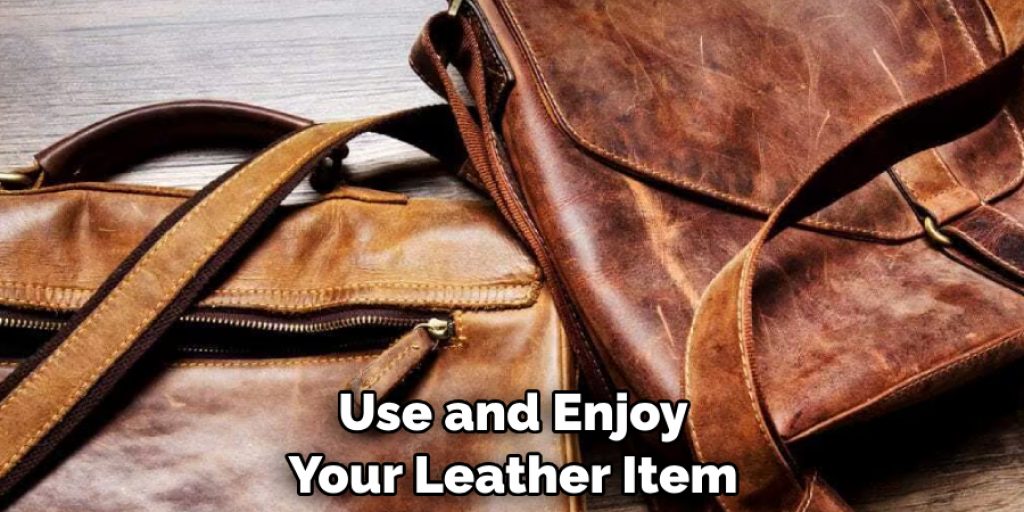
Things to Consider When Aging Leather
Leather aging is a popular way to give your leather a vintage look, but it’s important to understand the risks involved. Leather can be aged successfully, but it’s essential to take into account the environment and how you care for the piece before beginning.
It’s important to remember that leather should only be aged if it is already in good condition. Aging will not repair any damage or wear and tear on the material. If there are signs of deterioration, consult a professional before attempting to age the leather yourself.
Also consider the environment where you plan to keep your aged leather item. Dry climates can speed up the aging process, while humid climates can slow it down. Keeping your leather item away from direct sunlight will also help to preserve its condition and avoid fading.
Finally, know how to care for your aged leather appropriately. Clean it regularly with a damp cloth and periodically apply a moisturizing product such as beeswax or silicone-based protector. Avoid using harsh chemicals which can damage the leather.

If you take the necessary precautions, aging your leather item can be a rewarding process and produce a one-of-a-kind piece with an authentic vintage look. Knowing how to properly care for it after it’s aged is essential in order to ensure that your investment will last for years.
Conclusion
To recap, aging your leather can be a fun and rewarding process. It gives you the satisfaction of creating something unique that wouldn’t be found buy off the rack. By following these simple tips you can enhance the look of quality leather items with minimal cost and effort. Experiment, have fun, but also make sure to use caution when bleaching or chemical treating your items.
With the proper care and preservation techniques, you can transform an ordinary piece of leather into a truly special item that will enhance any collection or wardrobe. No matter what type of leather item you are looking to age, make sure to do your own research on the best techniques for how to age leather properly. Don’t be afraid to experiment, as this is part of what makes such a unique form of artistry!


